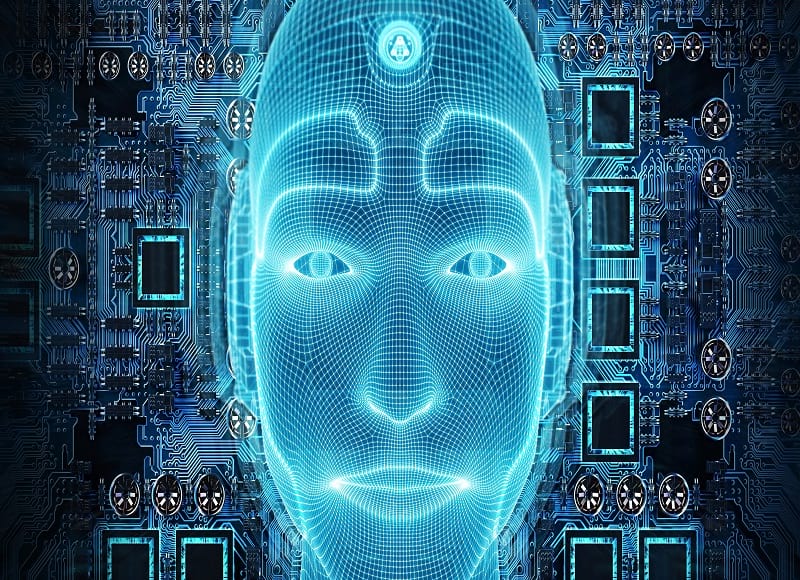A popular definition of consciousness is the awareness of internal and external environments. Since functional machines are aware of their environment, perhaps we should recognize that as consciousness.
Introduction
Even though neuroscience has made incredible advances, the origin of consciousness in humans — and its nature and processes — remain largely unknown; the underlying physiological mechanisms of generating conscious beings are still not clearly understood. However, with the advances in brain mapping and neuroscience, we are perhaps much closer to finally understanding the fundamentals of consciousness in humans than ever before.
It is said that what we cannot create we do not understand. While the very nature of human consciousness is difficult to understand, there is an intense effort going on to build a conscious computer mind out of computer chips (now neuromorphic chips). Understandably, there are growing concerns and questions about building a conscious mind using neuromorphic chips when there is so little clarity about the human mind and the very nature of human consciousness.
Now, we can perhaps understand the human brain as a functional computer and compare it with functional computer systems/machines. Now, over the years, we have wondered: to what degree are machines aware of their internal and external surroundings? Are computer systems/machines genuinely aware? Are self-aware machines already here? The answer to these questions perhaps raises only more questions, as comparing consciousness in functional machines to consciousness in functional humans is more difficult than expected.
Consciousness in machines is commonly understood to be the knowledge or situation of a fact. It seems the properties of consciousness are perhaps not biological. They are functional. The relationship between input, output and the state of the computer system (machine) is a causal relation to the state of a computer system (machine). It is this functionality, ability to know about one’s inner workings and external surroundings that make machines functional, intelligent, aware and conscious.
Although definitions and understanding differ, self-awareness is an evaluative process, involving data gathering and processing skills. Now consciousness in machines may be seen as the awareness of their existence and the world around them: about things like perceptions, sensations, feelings, thoughts, memories and so on. Since consciousness is in a way psychology of awareness, perhaps we can say that machines have awareness.
Machine Awareness
Researchers at Columbia University claim to have built a robot arm that can construct a self-image from scratch–taking a definitive step towards self-awareness. Let us evaluate the reality today. Each computer/machine that is connected to the internet has its identity in the form of an IP address, just like we humans have a home address and digital address. The fact that any machine knows its ecosystem, IP address, location, and more is a sign of awareness. From knowledge about the place, time, temperature, weather, and more, computers/machines have an awareness of their surroundings. As we see, the evolving voice assistants like Siri, Alexa and Google can have simple conversations with humans. The answers we ask digital assistants are responded to adequately. That certainly makes a compelling case for machines/computers being self-aware and functional.
Just like humans need to be aware of their emotions and behavior, machines also need to be mindful of their behavior. Since consciousness is the awareness of internal and external environments, and since computers and machines are aware of their environment, self-awareness is a recognition of that consciousness. Since self-awareness does not require a biological origin, today’s machines can be categorized as self-aware.
Moreover, consciousness is about the ability to think, and self-awareness is about realizing we are thinking. Now, computers/machines also have a better memory than humans because we humans neither always recall everything, nor do we remember all our actions or encounters. That brings us to an important point: since machines have better data gathering and analytical capabilities along with processing power and memory, are machines able to think even better than humans?
Thinking Machines
That brings us to an important point: do machines think? Alternatively, does it merely perform tasks by controlling symbols it has no understanding of? If machines do understand what they are doing and the jobs they are performing, is it called thinking? The answer to these questions depends entirely on how we understand thinking, self-awareness, and consciousness in machines. However, since there is no agreed central definition of consciousness for man or machine, it is perhaps time to begin a discussion and agree on an explanation to understand and evaluate the fundamentals of consciousness.
Acknowledging this emerging paradigm, Risk Group initiated a much-needed discussion on Machine Consciousness with Prof. John Kontos, a Research Scientist and Professor from the Department of Sciences of Cognition and Thinking (SCT), the University of Athens, Greece on Risk Roundup.
Disclosure: Risk Group LLC is my company
Risk Group discusses Consciousness in Computer Systems with Prof. John Kontos, a Research Scientist and Professor from the Department of Sciences of Cognition and Thinking (SCT), University of Athens, Greece.
Machine Consciousness
How should we define and understand consciousness in machines? Should it even be interpreted and compared with human consciousness? As discussed previously, there is no central definition of consciousness. While neuroscience hypothesizes that consciousness in humans is generated by the interoperation of various parts of the brain, in addition to functionality, similar structural interoperation of machines/computer parts can perhaps also be used to hypothesize consciousness in machines.
That brings us to some critical questions:
- What are the critical regions for consciousness in machines?
- What are the mechanisms of consciousness in machines?
- What is the function of machine consciousness?
- How do we measure consciousness in machines?
- Which are the mechanisms by which consciousness is manifested in machines?
- Which conditions does a machine need to meet to be labeled as conscious?
What Next?
Since connected machines have some self-awareness, and self-awareness does not require biological origin, can we say that today’s machines are even more self-aware than humans?
NEVER MISS ANY OF DR. PANDYA’S POSTS
Just join here for a weekly update





 Is the Future Of Artificial Intelligence Tied To The Future Of Blockchain?
Is the Future Of Artificial Intelligence Tied To The Future Of Blockchain?